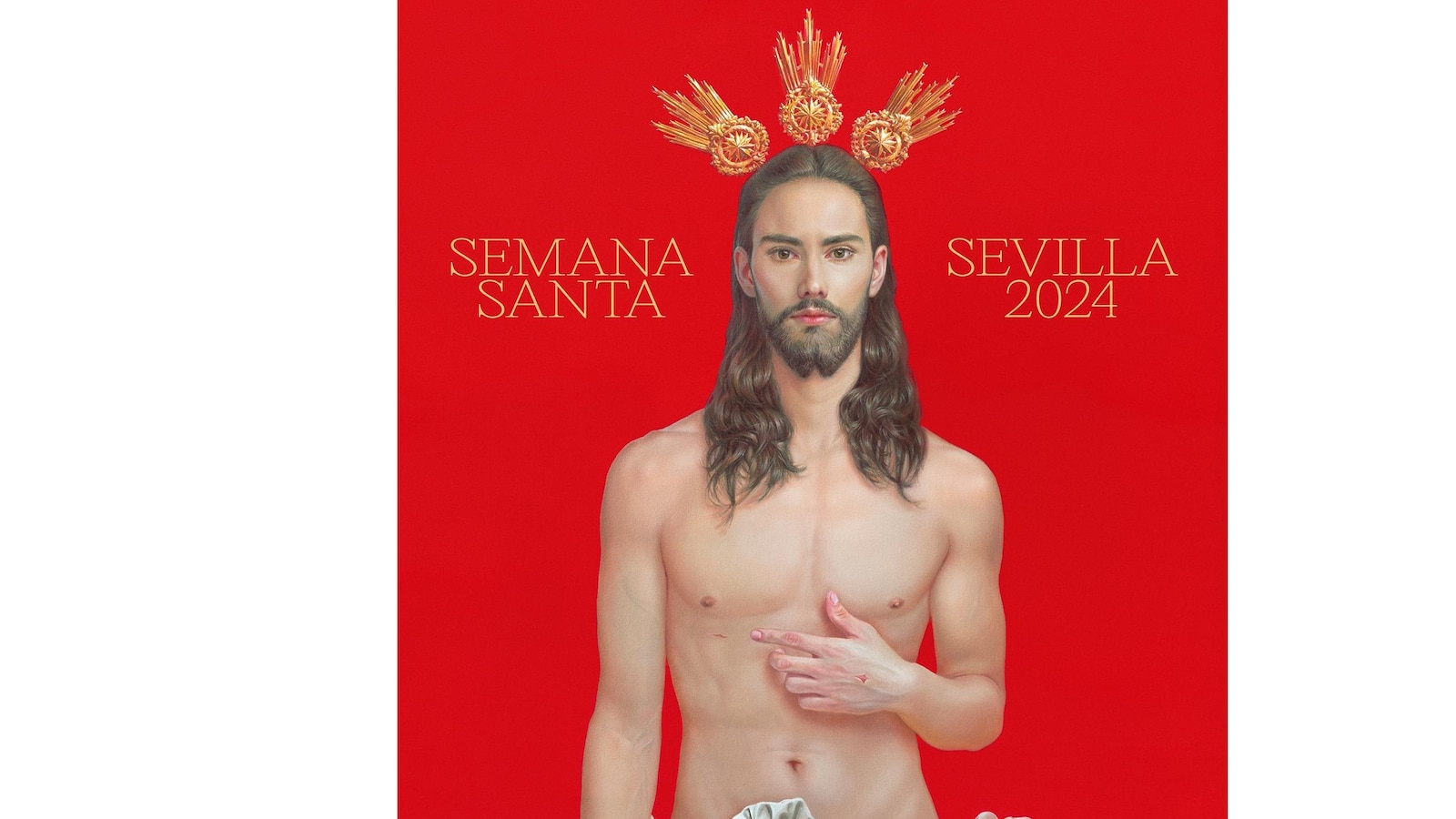Controversy Arises in Spain over Easter Poster Featuring a Youthful and Attractive Depiction of Jesus
Spain, a predominantly Catholic country, is no stranger to controversy surrounding religious imagery. However, the latest uproar revolves around an Easter poster featuring a youthful and attractive depiction of Jesus, sparking a heated debate among religious and artistic communities.
The poster, created by a local artist, portrays Jesus with flowing hair, a well-groomed beard, and a chiseled jawline. His eyes are bright and captivating, and his overall appearance exudes youthfulness and attractiveness. While some argue that the poster represents a modern interpretation of Jesus, others believe it undermines the traditional image of Christ.
The controversy stems from the perception that the poster’s portrayal of Jesus deviates from the traditional depictions found in religious art. Throughout history, artists have often depicted Jesus as older, with more rugged features, reflecting the hardships he endured during his crucifixion. This traditional representation has become deeply ingrained in the minds of many believers.
Critics argue that the poster’s portrayal of Jesus as youthful and attractive diminishes the spiritual significance of Easter. They claim that it reduces Jesus to a mere object of desire rather than emphasizing his divine nature and sacrifice. Some also argue that it trivializes the suffering he endured for humanity’s salvation.
Supporters of the poster argue that art should evolve and adapt to contemporary sensibilities. They believe that the youthful depiction of Jesus resonates with younger generations who may find it easier to relate to a more relatable and approachable figure. They argue that this portrayal can help bridge the gap between traditional religious imagery and modern society.
The controversy has also sparked discussions about the role of art in religious contexts. Some argue that art should be free from restrictions and censorship, allowing artists to express their interpretations of religious figures. Others believe that religious imagery should adhere to certain established norms to maintain respect and reverence for sacred figures.
The Catholic Church in Spain has not officially commented on the controversy, but individual priests and religious leaders have expressed their concerns. Some have called for a more traditional representation of Jesus during Easter celebrations, while others have urged for a more inclusive and diverse portrayal.
This controversy highlights the ongoing tension between tradition and modernity in religious practices. It also raises questions about the evolving role of art in religious contexts and the need for respectful dialogue between different perspectives.
As Spain prepares to celebrate Easter, the debate over the poster’s depiction of Jesus continues to divide opinions. While some view it as a refreshing and relatable interpretation, others see it as a departure from the sacred and traditional. Ultimately, it is up to individuals to decide how they interpret and engage with religious imagery, whether it aligns with their beliefs or challenges their preconceptions.



